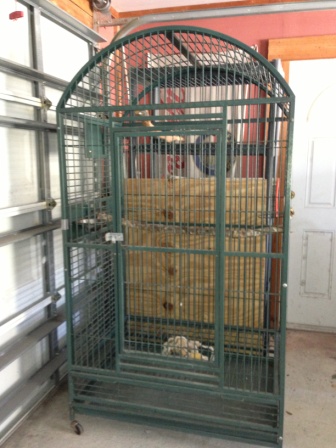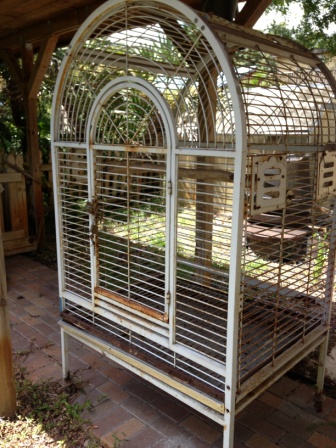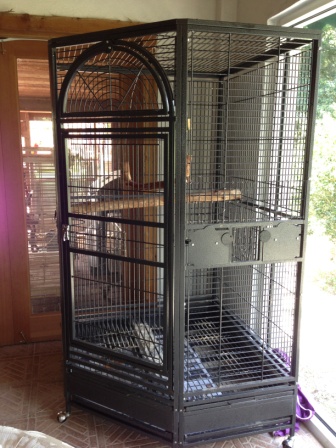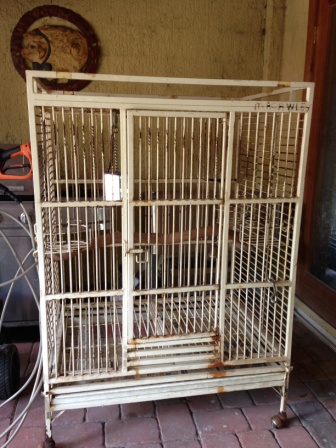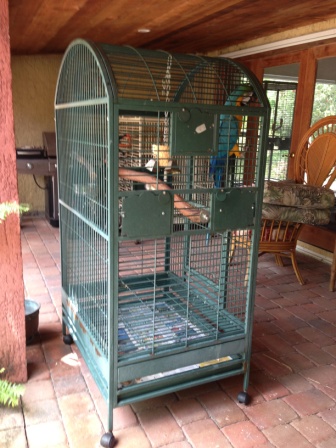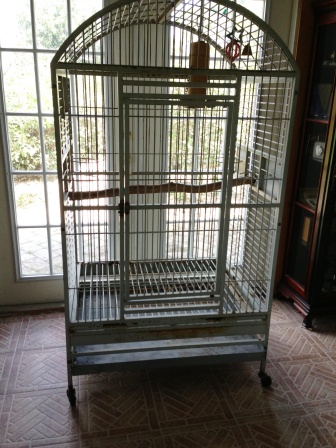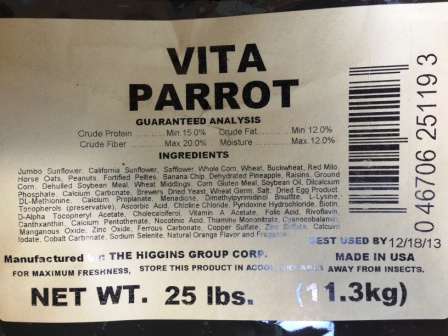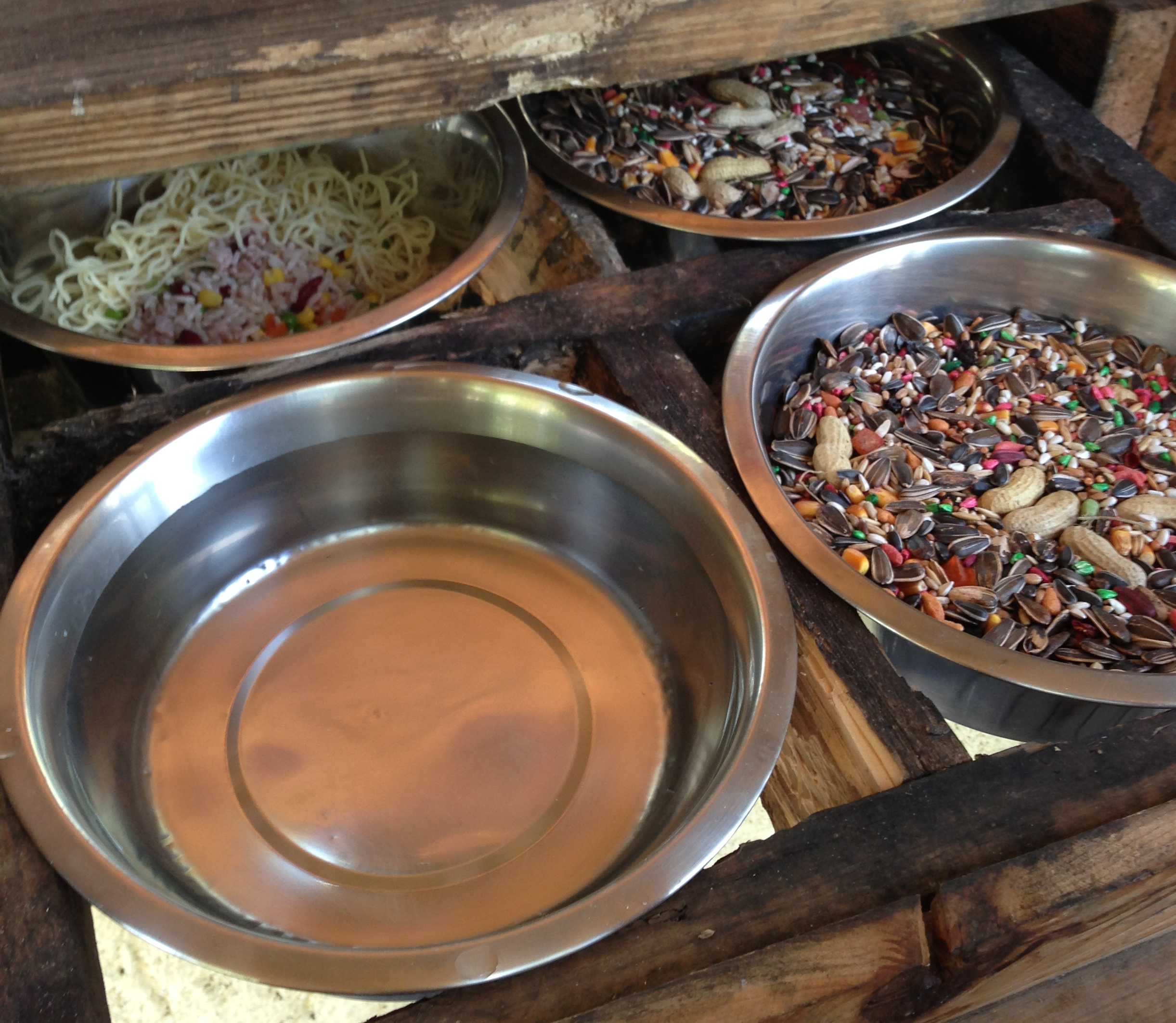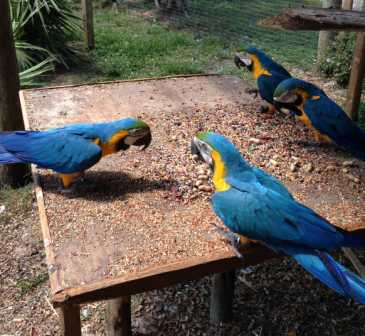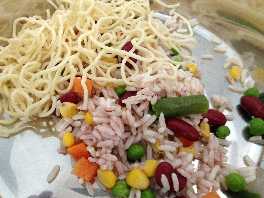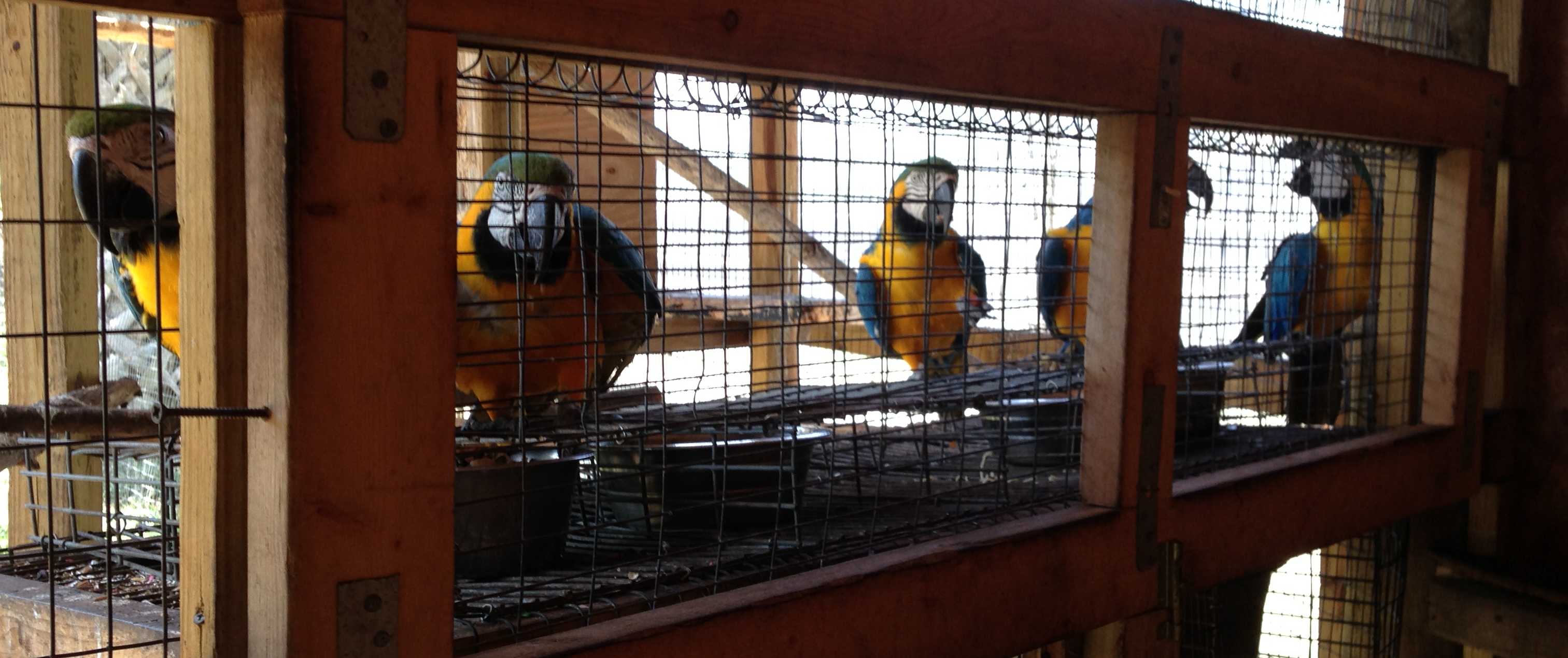-
We usually prepare the food fresh each morning and by 10:30 AM we serve the food but in practice it is never too early. After about 4 hours we remove what is left and recapture anything useable for the next day. No food is left overnight which helps to control attracting insects and rodents, keeps food free from feces and assures the birds only receive fresh and clean food.
-
In the wild, birds must forage far and wide for their food. Usually they will leave the mountains at daybreak and fly down to the coastal plains to feed on fruits, plants and nut trees. They stay in the shade hopping from tree to tree and by mid-afternoon have a full crop. They digest their food while resting high in the trees and out of the direct sun before flying back to roost in the hills before sunset. As they fly around they leave their feces behind which contains undigested seedlings. In this way Nature assures that plants are reseeded without need for man's interference.
How much time does a Macaw require?
-
The policy at the sanctuary is to allow the birds to be birds. Birds are very social animals and for this reason are always seen in flocks of a dozen or more - sometimes up to hundreds in the wild. They mate and do so for life. Baby birds raised by hand in a human environment may bond to some degree with their human owner. Separating them from their owner can cause "separation anxiety" and result in bad behavior such as feather plucking. In our environment we must provide 24/7 care to provide food and shelter and security. Given the bird has no access to its natural defense mechanism - namely to give flight and flee the danger - the human intervention is required at ALL times to protect from cats, racoons, rats, hawks and other human beings.
-
Going away for the weekend and leaving "enough food and water" in a cage is a poor choice. Firstly, the bird will tend to eat everything which after a few hours will have been processed leaving nothing for the remaining days. Birds do not self diet anymore than dogs do. Secondly the water will get dirty and collect bacteria from foodstuffs falling into it; thirdly, the feces on the floor of the cage will grow bacteria injurious to the bird and finally it will be denied the social interaction it requires and demands. This leads to poor character and stress.
-
At the sanctuary over 5 man hours are necessary each day to prepare the food, clean the cages, do the daily change of water, maintain the facilities and attend to the administration of the enterprise. That is equivalent to just about 7 minutes per day per bird. However, the birds have each other for attention and many other things to keep them busy and occupied. In a home environment where usually there is only one bird with little else to keep it occupied, a bird would require significantly more human attention to maintain a healthy attitude.
How often does a Macaw cage require cleaning?
-
Every day ! At the sanctuary the bird cages are vacuumed every day to remove all loose or discarded food, residue from chewing wood as well as preened feathers or feces from perches, cage bars or the floor. The smaller the cage, the more urgent this matter becomes. The main enemy of a Macaw is bacteria which grows quickly on residue and waste left in a cage.
-
Food dishes are removed daily and sanitized in a washing machine daily. Water dishes are removed, sanitized and replaced with fresh water daily.
-
Every cage receives a thorough pressure washing every week and the flight aviaries have the grass cut and residue seeds and shells raked up, collected and removed from the ground weekly.
-
Birds look beautiful and clean but they are in fact very messy housekeepers and require a dedicated cleaning service when maintained in confined quarters. In the wild they just move on and contaminate another area while mother nature cleans up their mess over time using rain, wind and an army of insects and other animals.
What is a good cage for a Macaw ?
-
Commercially made welded metal cages are the best. They should be able to be locked and have lockable doors for the food and water dishes. The dishes should be large and deep to accommodate the Macaw's large beak. The wire floor should not allow the Macaw to access the tray below which collects the droppings and residue foodstuff.
-
All maintenance and food and water delivery should be done from outside the cage and not require direct access to the bird to avoid the possibility of escape or injury to the care giver.
-
The larger the cage the better so that the bird can move around from perch to perch and exercise its wings inside the cage. Here are some examples of cages made exclusively for Macaws:
